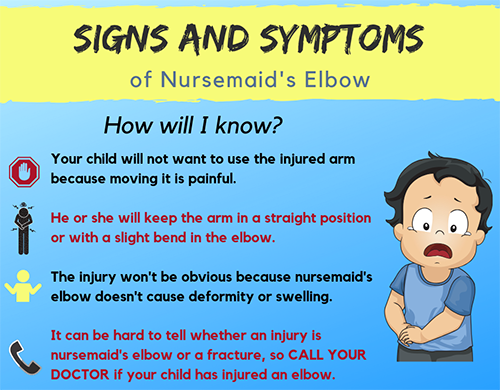This is a sponsored post presented in partnership with Dayton Children’s Hospital. We are proud to work with them to provide today’s parents with expert health advice and information.
Our kids are bendy. Sometimes really bendy. Almost like Gumby. (DMC note: Some of you might be too young to know Gumby. You should look him up. He was a 1950s phenom that Eddie Murphy revived in the 1980s. But I digress.) Anyway, they’re so bendy that we think they won’t break. Luckily – for us and for them – most of the time that’s true. But occasionally, they can get a little – well – dented.
If you’ve never heard the term “nursemaid’s elbow,” you’re not alone. We weren’t sure about it either. And so, as is the case when we have questions of the medical variety, we turned to our friends at Dayton Children’s Hospital for answers.
What is nursemaid’s elbow?
Also known as “pulled elbow,” nursemaid’s elbow typically happens in children between one and four-years old. The condition occurs when a ligament slips out of place and gets stuck between two bones in the elbow joint. It might get unstuck by itself, but most cases require some help from a healthcare professional. Some of the most common ways this happens is by swinging a child by holding their hands, pulling up a child by their hands, or rolling over in an awkward way. There is usually some pain when the injury occurs, but it doesn’t cause long-term damage.
How is it treated?
Although this kind of injury sounds scary – and likely will be if it happens to your child – stay calm and know it is very fixable with a routine procedure. When you take your kiddo in, a doctor will examine the arm and ask questions about how the injury happened. Usually, no special tests are needed to diagnose nursemaid’s elbow. X-rays are done only if a fracture is suspected.
If there’s no swelling or signs of another injury, the doctor will do a gentle maneuver called a reduction. This procedure takes only a few seconds. Your child can sit on your lap while the doctor gently takes the arm from a straight position and bends it upwards or straightens the arm while turning the palm to the floor.
DMC contributor Cheryl has been there! She tells us her family’s story treating nursemaid’s elbow at Dayton Children’s.
The babysitter called and told us that something was wrong with our 16 month old. We rushed to her house to find that our little guy was not using his arm and seemed to be in pain if he tried to move it. We made the immediate decision to bypass our great pediatric office and head to Dayton Children’s. We knew that they could do whatever needed to be done right there and we would not have to go somewhere else if x-rays of his arm were needed. When we arrived to the emergency room, my husband drove up to the front emergency entrance and dropped us off. With insurance card in hand, we made our way to the front desk and began checking him in. We were taken back to a room even before my husband made his way in from the car and they assured me they would bring him back to me when he made it in. Within minutes, my son was being examined and they explained that they were going to do x-rays to rule out a broken bone. The doc was pretty confident it was nursemaid’s elbow, but due to his age and a weird symptom of not using one of his legs either, they would start with x-rays.
The x-ray tech was AMAZING and we had pics for the doc to see. We waited 20 minutes for the images and the nursemaid’s elbow was confirmed. The doc popped his elbow back into place, they observed him for 20 minutes and then we were sent on our way. In less than two hours, we made it back in time to pick up our other child from the babysitter without missing a beat. Our experience was wonderful and I will most definitely go to Dayton Children’s again.
So, what happens after nursemaid’s elbow?
Well, thankfully, not much. Although your child might feel a bit of pain during the reduction, (DMC Note: Please know that it doesn’t look like what we see on TV when someone puts a dislocated joint back in!) most kids generally regain full use of their arm almost immediately. Occasionally, the doc may have to do an additional reduction to fully fix the injury.
If your child is afraid to use the arm once it’s fixed because they think the pain will come back, the doctor might put their arm in a sling, or sometimes a splint, just to protect the arm and give it a few days of rest. You’ll also be able to give acetaminophen or ibuprofen if your child does continue to experience pain.
Once your child has experienced nursemaid’s elbow, the likelihood is greater they could have it happen again. Be mindful of the risks and don’t pull, tug, or swing your child by the arms or hands, and be sure to tell all caregivers to do the same.
And rest assured, if it does happen again, the folks at Dayton Children’s are always there to help glue that kiddo back together!















